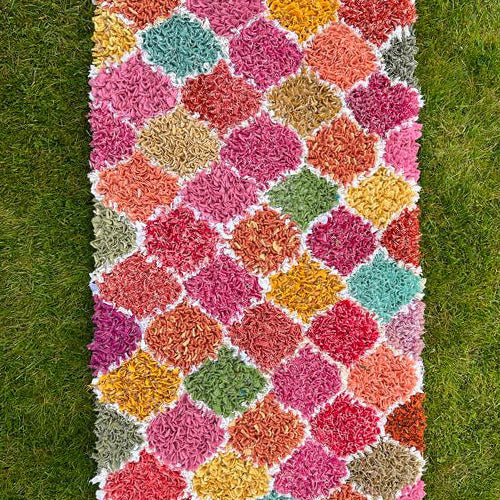A mindful technique that will have you hooked!
If you're looking to take up a craft that's easy to learn, soothingly repetitive, and incredibly rewarding, then rug hooking might just be your perfect match.
It’s one of the most beginner-friendly textile crafts out there, requires very little equipment and can be used to create everything from gorgeous rugs and cushions to wall hangings and decorative art pieces.
Below, we’ve gathered some helpful tips to get you started, but if you’d prefer to learn in person, don’t miss our British Rag Rug Techniques for Beginners Classes.
What is Rug Hooking?
Rug hooking is one of the neater rag rug techniques out there. It can be so precise that with time and patience, you can even re-create Van Gogh's sunflowers in rag with this technique if your heart desires. We mostly stick to simpler designs though :)
Using a rug hook and woven backing fabric (usually hessian / burlap), you pull strips of fabric or yarn up through the weave to create loops that form a textured design on the surface. It’s a wonderfully hands-on process where you build your design loop by loop, gradually filling in your pattern with colour and texture.
There are some differences between how we rug hook here in the UK versus in the USA (more on that later), but rug hooking is a gentle, rhythmic craft that’s easy to pick up and endlessly relaxing to do.
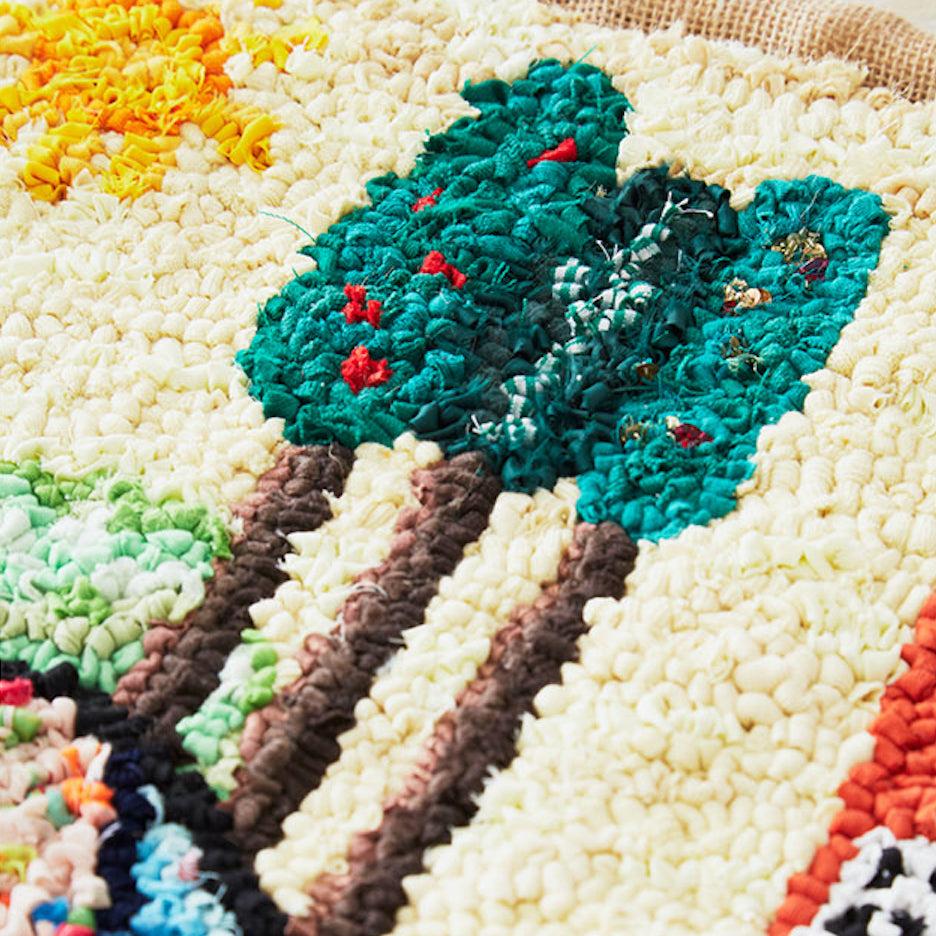
What Equipment Do I Need to Rug Hook?
Rug hooking requires just a few simple tools to get started, making it a super accessible craft. Here’s a quick rundown of what you’ll need:
- Rug Hook - this is the main tool used to pull your fabric or yarn strips up through the backing. There are different types, but most beginners start with a good all-rounder like our Ragged Life Rug Hook.
- Base Material – Usually hessian (burlap), rug linen, or rug warp. The quality and weave is relatively important. We sell pre-hemmed hessian for various projects here.
- Fabric Scissors / Rotary Cutter & Mat- we like to cut fabric strips by cutting through lots of layers at once, using super sharp Rag Rug Scissors. See them in action here.
- Fabric / Old Clothing – This is what you use to create your design. Old clothes, t-shirts, wool, or even fleece all work brilliantly (see below for more details).
- Optional Extras - some rug hookers use rug frames to keep their base material taut and others work with fabric strip cutting machines. These are more commonly found in the USA than in the UK and neither are strictly necessary.
That's it! With just these basics, you’ll be ready to start your first rug hooking project in no time.
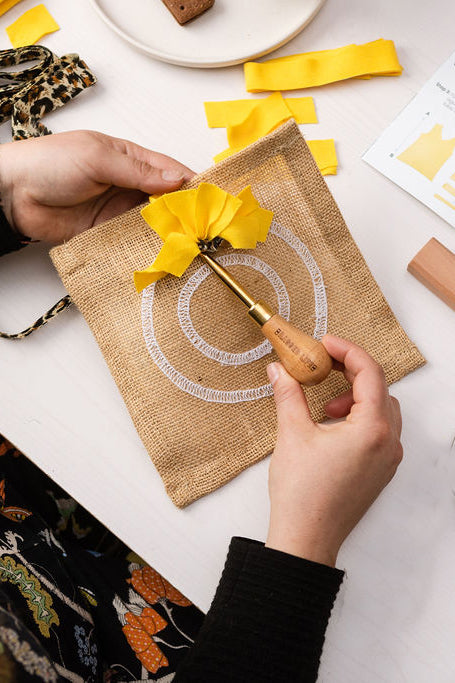
Rug Hook
Rug hooks come in a number of different shapes and styles. The main differences are the shape of the handle and the size of the hook - deeper hooks are made to work with wider strips for chunkier designs and finer hooks with narrower strips to build in more detail.
The shape of the handle is personal preference - some people prefer a traditional round handled hook that sits nicely in the hand (like our Ragged Life Rug Hook), others prefer a pencil or elongated oval shape. Don't overanalyse though - the pros and cons of different hooks is only a rabbit hole you need to go down if you get super deep into the craft.
Rug hooks differ from other hooks (we often get asked whether a crochet hook can be used to rug hook with) because the pointed end allows you to easily slide into the small holes of the base material and the thickness of the neck is perfectly proportioned so that it enlarges the hole and you don't get snagged on neighbouring strands when you pull the fabric strip back through. Neat huh!
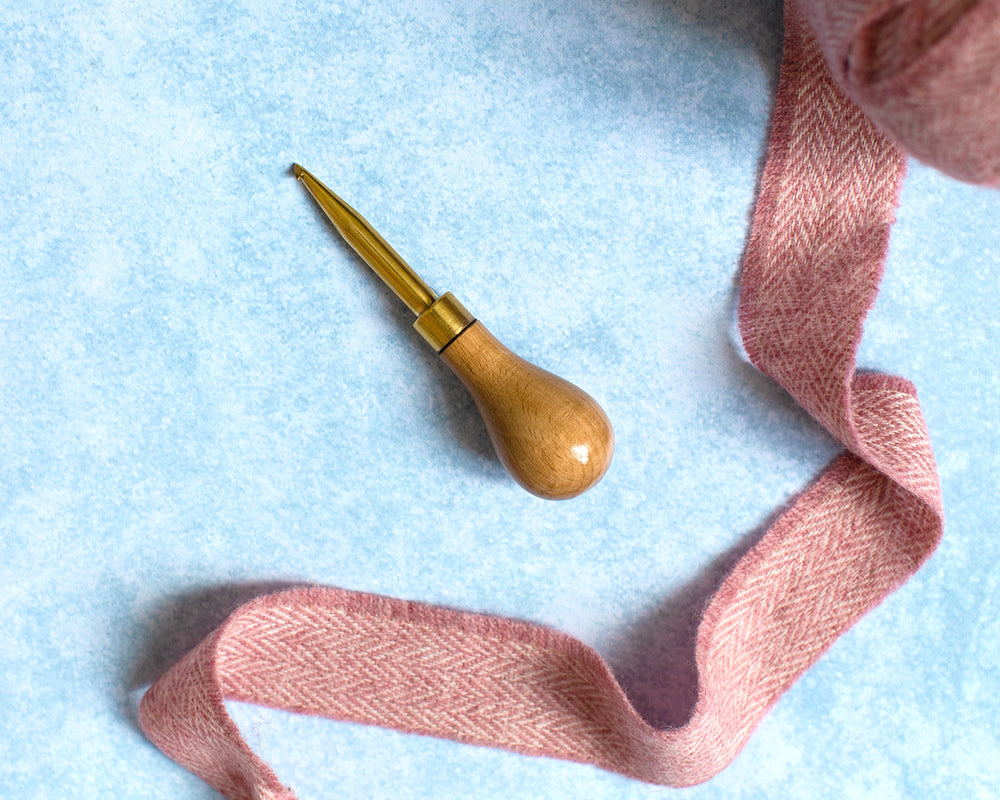
Base Material / Rug Backing
Backing Fabric is the foundation of your rug hooking! It’s the surface you pull your loops through to build up your design, so it needs to be sturdy enough to handle repeated hooking without tearing or stretching.
The most commonly used backing materials are hessian (burlap), rug linen, and specialist rug warp. Hessian is a great budget-friendly and sturdy option for beginners and is what we prefer to use here at Ragged Life as it's the most traditional. Rug linen offers a finer weave that's ideal for very detailed work, but is harder to get hold of in the UK.
Colour isn’t hugely important, as it will be covered by your design, but opting for a neutral tone can help make your layout process easier.
The ethos of rag rug making is to use up what you've got, so if you happen to have an old coffee sack at home, which you'd love to work with then give it a go! Just remember, the weave needs to be tight enough to hold your loops securely, but not so tight that it’s a struggle to pull your fabric through. We aim for something around 10 holes per inch, which seems to be the sweet spot.
Looking for an easy first project? We stock pre-hemmed hessian with pre-printed designs, which are ideal when you're starting out. Think paint-by-numbers but rug hooking with old clothing!
Tip: If you’re working with thicker fabric strips, choose a backing with a slightly looser weave to avoid unnecessary hand strain!
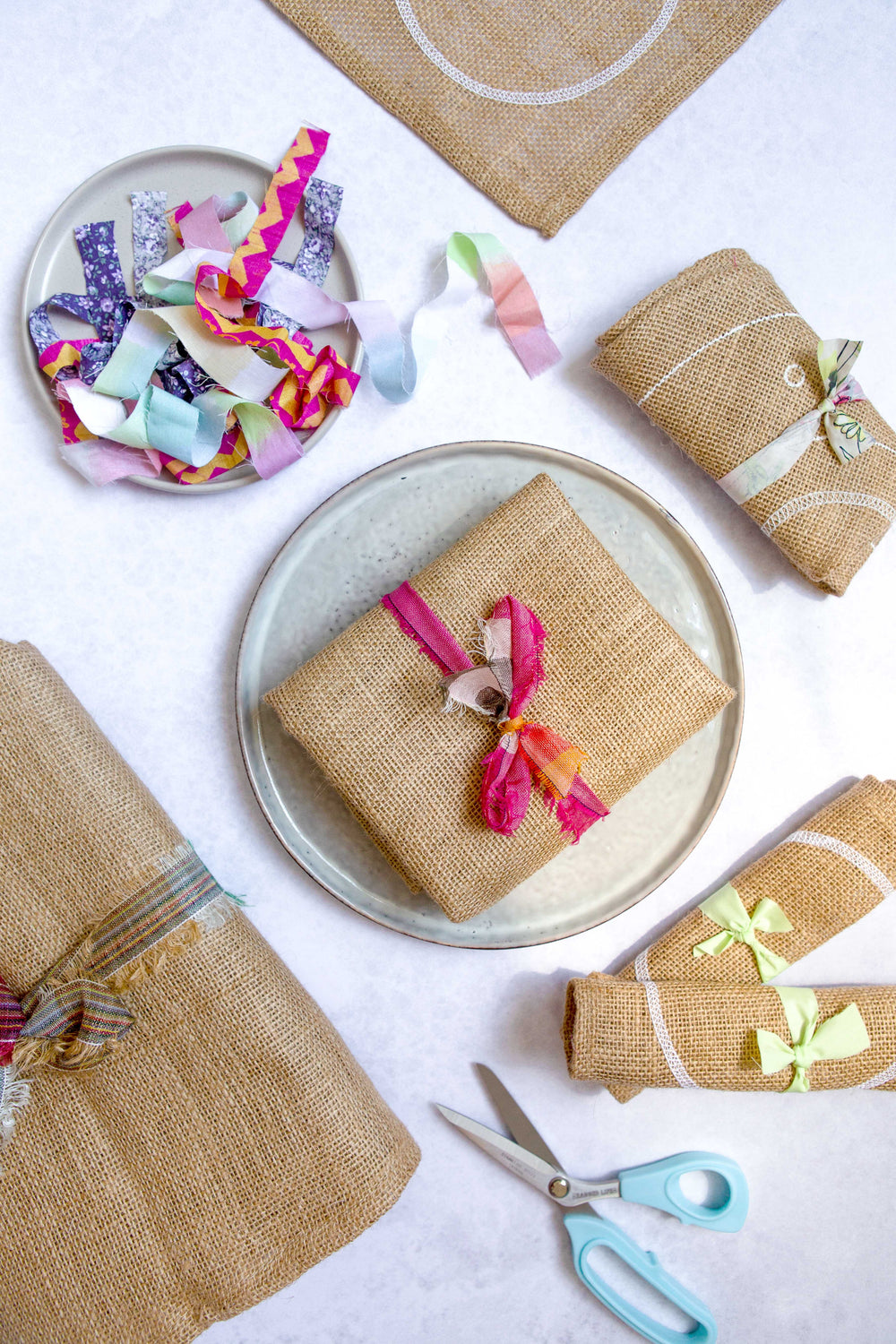
Fabric / Old Clothing
When it comes to fabric for rug hooking, the possibilities are endless! You can use a wide variety of materials, from leftover fabric scraps and old clothes to yarn, wool, or even raw fleece. Old clothing, especially cotton t-shirts, pliable sportswear, and wool sweaters, are perfect for upcycling and turning into beautiful rugs. Simply cut them into strips, and you'll be ready to start hooking! The key is to use fabric that’s strong enough to hold up over time, but also soft enough to work with easily. T-shirt fabric, for example, is stretchy and easy to cut into strips, making it a popular choice. You can even mix and match different fabrics for a fun, textured effect in your design. The beauty of rug hooking is that it’s a great way to repurpose items you might otherwise throw away, turning old clothes into something new and creative.
If you are working with recycled fabrics, cut strips approximately 1-2cm in width. The longer the strip the better (watch how to create fabric strips from clothing here). Cut thicker fabrics narrower and thinner fabrics wider to compensate for different thicknesses within the same project.
Tip: If you're looking to spend more time rug hooking and less time cutting strips and joining them together, take a look at our 100% wool blanket selvedge strips or Ragged Life recycled sari silk ribbon.
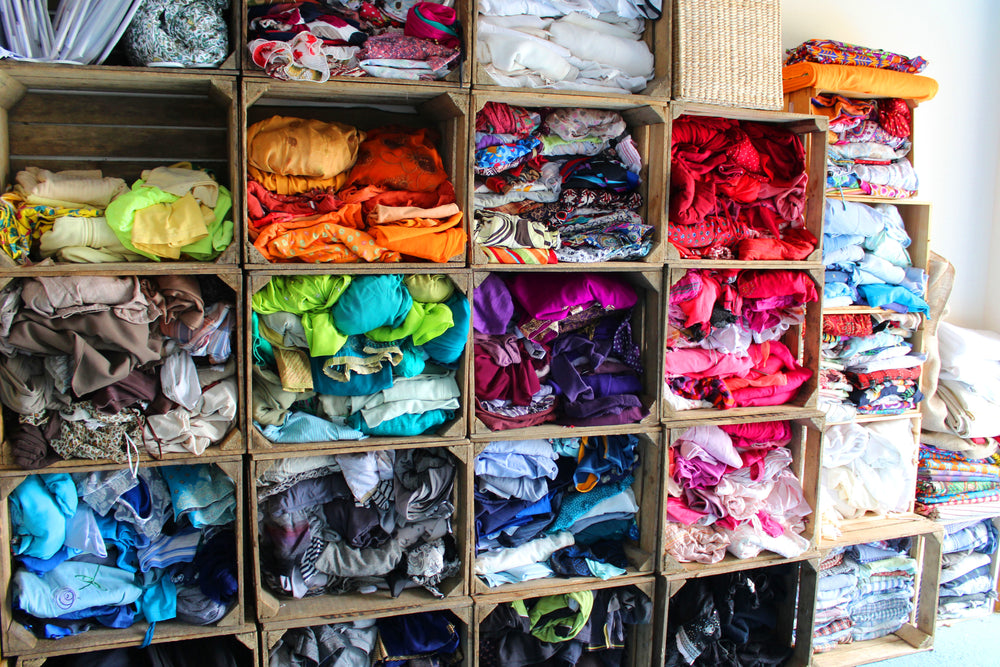

Looking for convenience?
Our Ragged Life pre-printed designs make rug hooking so much easier, especially for beginners! With clear patterns already printed onto pre-hemmed hessian, you can skip the measuring and drawing, and just get straight to hooking. It’s a perfect way to start your project with confidence, creating beautiful rugs and smaller projects without any hassle.

Want to see rug hooking in action? Watch our FREE "Rug Hooking for Beginners" tutorial videos below...
We've created a free YouTube playlist specifically designed to help beginners learn how to peg loom weave for the first time. Watch the four videos in the series below and give us a follow if you like our content. Got any questions? Read our FAQs section below or comment on any of our videos if you're unsure of anything.
Rug Hooking Tutorial Video
In this step-by-step rug hooking video, Elspeth talks through the tools needed to rug hook and how to do the technique itself.
Common Rug Hooking Mistakes Video
And here you can learn all about common rug hooking mistakes and how to avoid them.
Differences Between UK & US Rug Hooking
And just in case you're interested in how rug hooking differs between the UK and USA.
Beginner Rug Hooking Designs Video
Not sure where to start? The patterns shown in this video are ideal for beginners.
Top Tips for Beginners
1) Use soft, pliable fabrics for your first project as these are easiest to rug hook with. Jersey from old t-shirts is ideal.
2) Choose fabric that is the same colour on the front and back, so that you don't need to control which side of the fabric strip shows on the front of your project.
3) Rug hooking feeling a bit awkward? Try rotating the hessian / rug backing around to get a better angle. You'l find one way feels more natural than the other way.
4) Fill shapes in from the outside inwards. This means that if you run out of one particular colour, your design stays symmetrical and the colour change looks deliberate.
5) Make your loops around 1cm in height for your first project whilst you're learning. Longer loops cover the backing better, which makes them more forgiving than shorter loops. It's the consistency in height which makes things look neat!
6) Leave your tails on the front, not the back.
7) Don't overcrowd your loops. If you are rug hooking to close together (in every hole for example), your hessian will begin to warp and curl. Loops need space to breathe!
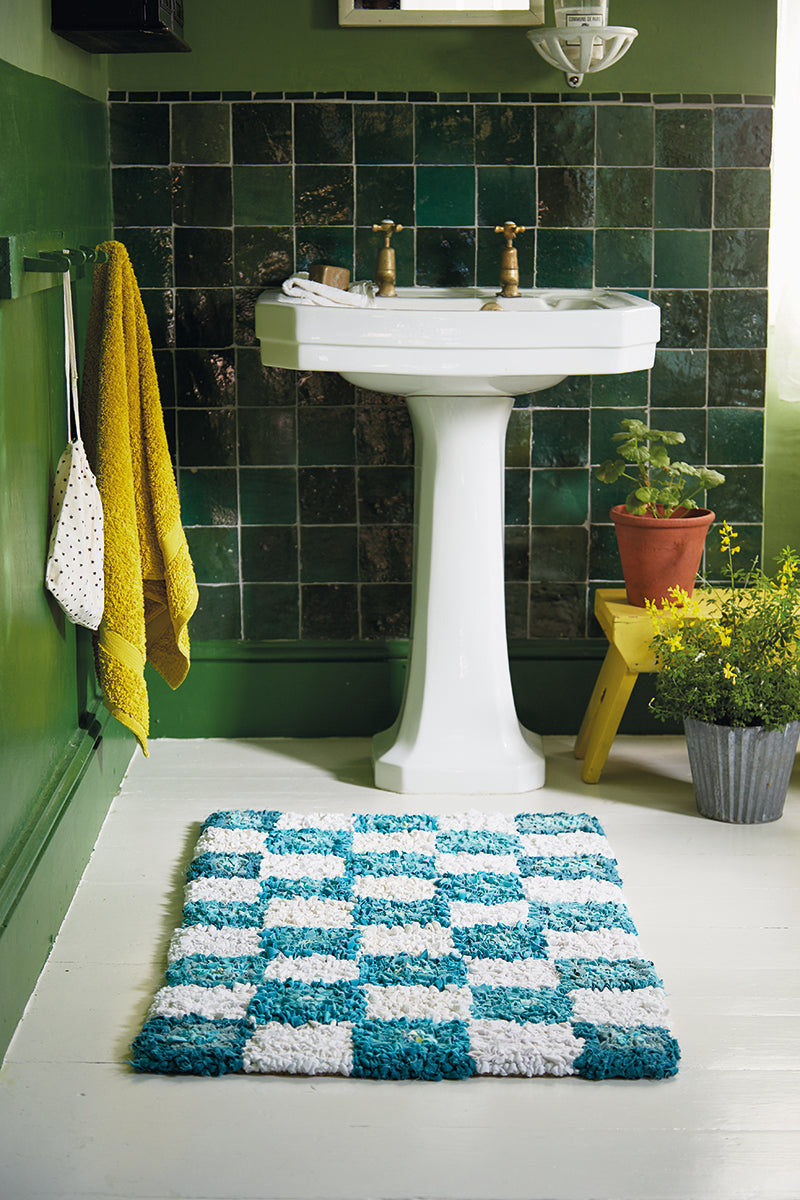
Project Ideas & Inspiration
We often share out latest makes on the Ragged Life Instagram page or Facebook page, so those are great resources to see what rug hooking and rag rug projects students have made in the past.
For detailed instructions and pretty projects, we also have beginner projects in our first book "Rag Rugs, Pillows & More".
Great beginner projects include: rugs, cushions, framed art pieces, placemats, seat pads and table runners.
Harder rug hooking projects are ones that require assembly at the end, such as Christmas stockings, basic upholstering, pouffes, purses etc...
Below are some rug hooked projects made by the Ragged Life team (top row) and students (bottom two rows) to provide some inspiration.
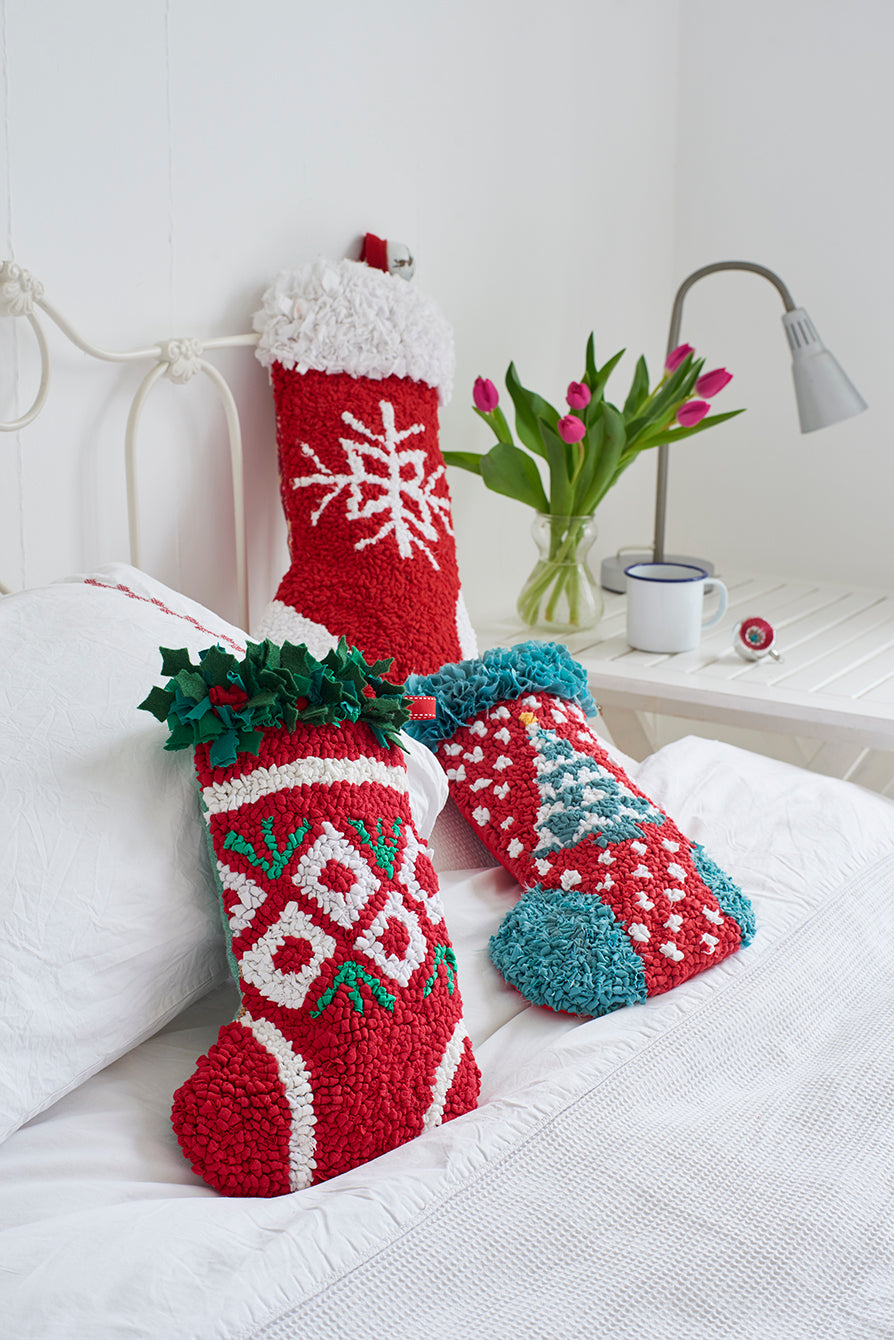
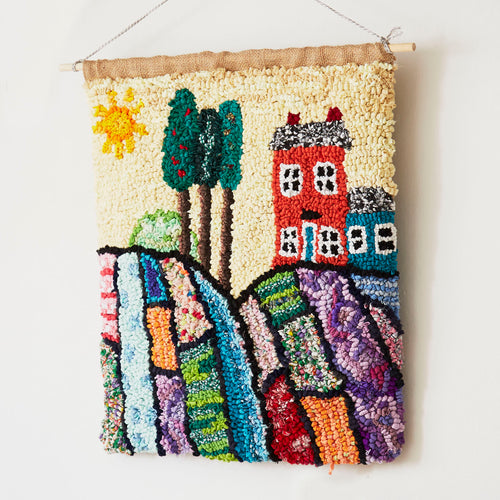
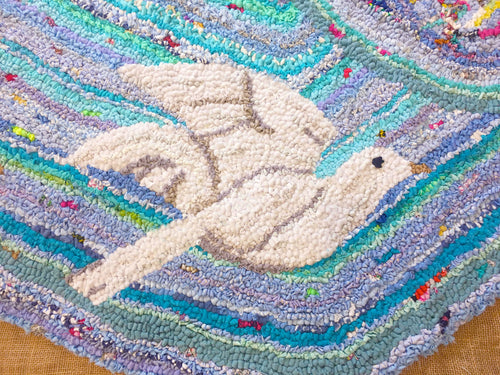
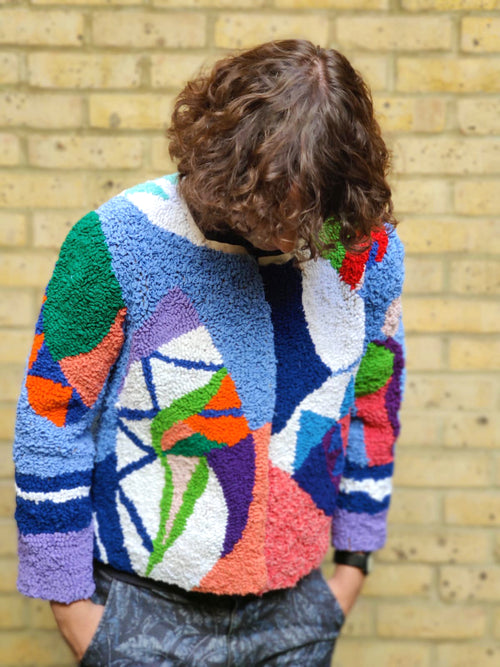
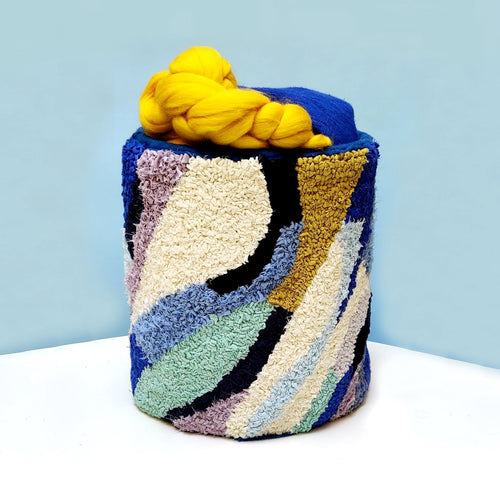
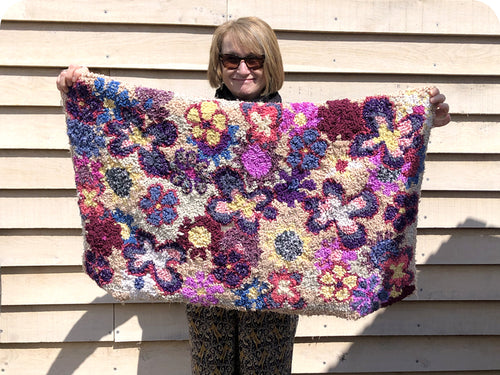
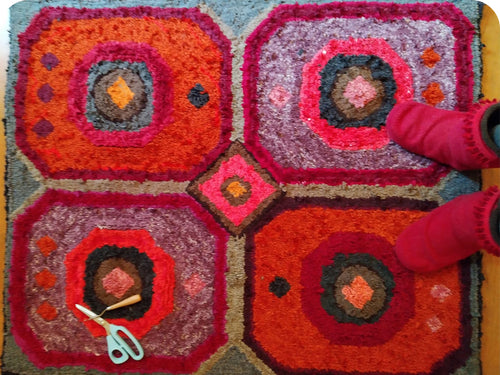
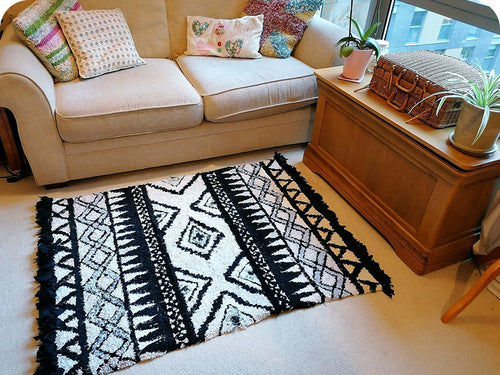
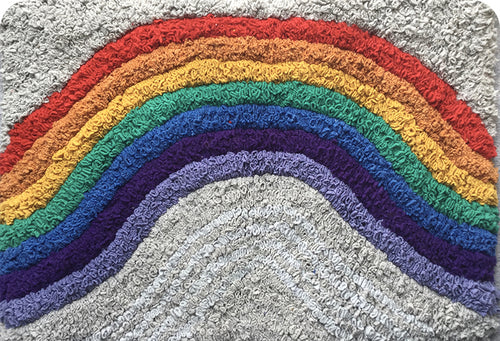
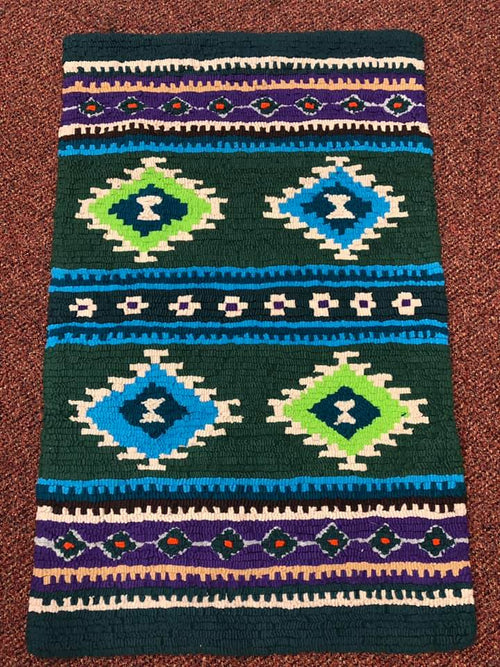
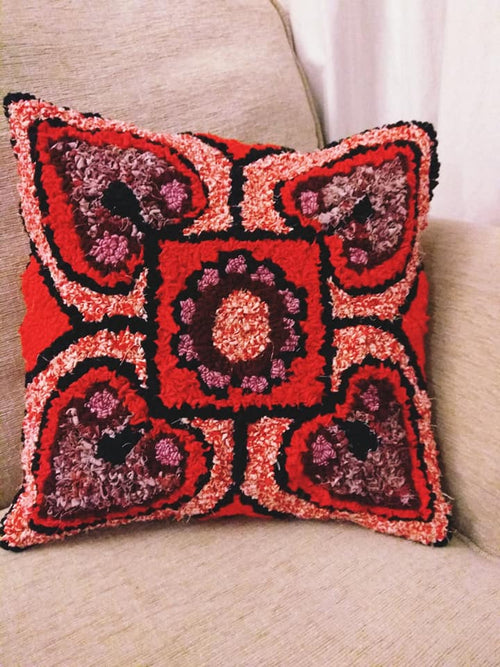
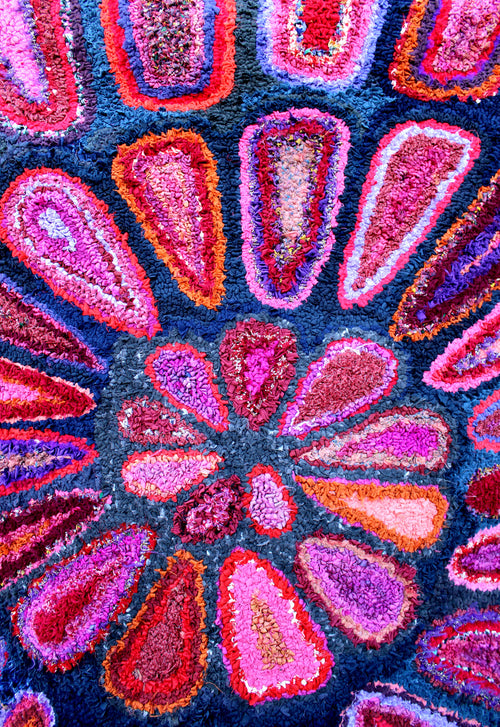
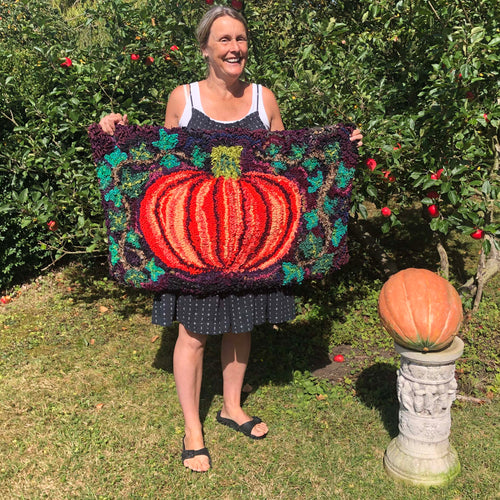
Prefer to learn in person?
We teach rug hooking as part of our British Rag Rugging for Beginner classes, which take place in various venues across the country, including Hertfordshire, Brighton, York, London, Bristol, the Lake District, Essex and more. Read more about our most popular rag rug making class below and browse dates by clicking through.
Fortnightly Rag Rug Inspiration Newsletter
Sign up for our fortnightly rag rug inspiration newsletter below to be the first to find out when new patterns are released, when tutorial videos go live and to build your craft community. You can unsubscribe at any time!

